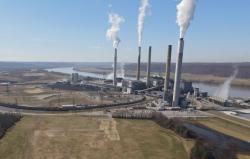
OR WAIT null SECS
© 2024 MJH Life Sciences™ and Turbomachinery Magazine. All rights reserved.
How Siemens is managing mergers
At the recent bi-annual Combustion Turbine Operations Technical Forum (CTOTF) that took place in St. Augustine, Florida, Siemens dealt with users its perspective on the Dresser-Rand and Rolls-Royce mergers.
(The Dresser-Rand's KG2-3G gas turbine is suited for power requirements from 1 to 12 MW)
It has been more than a year since the Siemens and Dresser-Rand (D-R) merger was announced. Siemens also picked up Rolls-Royce (RR) aeroderivative assets late in 2014. Duncan Swan, Vice President of North America Services Sales for Dresser-Rand, provided an overview of the integration process. “This is a complex merger and it will take time to fully integrate D-R and Siemens,” said Swan. He outlined the complexities being faced, both culturally and organizationally, and said these are expected in a merger of this scale.
These, he said, were being addressed by taking the best-of-the-best from each company. For example, Siemens has a Product Competency Center (PCC) where they undertake repairs, and control and promote upgrades. This ensures machines being repaired also to be considered for the latest upgrades.
Swan believes the D-R business can benefit from applying this process to the compressor fleet. Additionally, Siemens has extensive expertise in long-term service contracts that D-R can learn from and apply to its compressor and turbine fleet.
Dresser-Rand has so far addressed the compressor within a train. Now, with its expanded portfolio of products and services, it can provide a single point of contact for the entire train and auxiliaries.
On the other hand, Siemens traditionally favored a more centralized business model, such as the PCC referenced above, whereas D-R has focused on localized service and support. Swan said Siemens, which has already started working towards a less centralized model, will accelerate this transition using the D-R infrastructure to support clients better, locally.
Many users of Trent aeroderivatives attended the forum. Some expressed concern that packaging will be moved from the facility in Mount Vernon, OH, to Europe. However, Swan said packaging could be executed anywhere. But it is important that parts and service portfolio remain in Mount Vernon, with engineering and project management experts.
To users' complaints about delay in receiving spare parts for Trent engines, Swan said efforts were on to industrialize the Trent supply chain so that there is no delay in qualifying the spare parts based on aviation regulations. Within five years, this transition should be complete, he said. Trent turbines, however, will continue to benefit from innovations introduced in the aviation sector.
Swan concluded that with the large installed base of approximately 130,000 units (D-R has 96,000 units; Siemens 33,000 and former RR Energy Division 4,200), the global service support network and the broad range of products and services, there is much more to be done.



